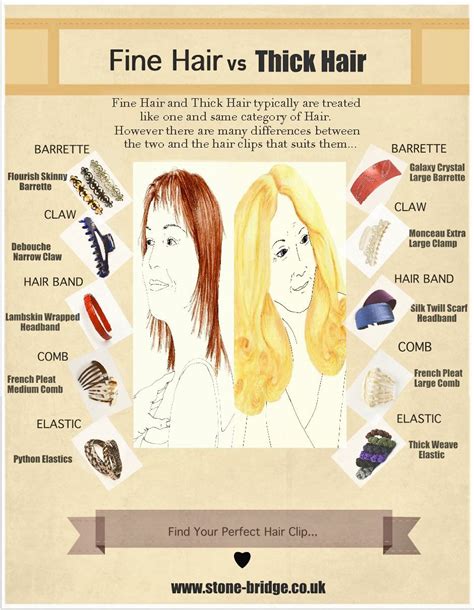Introduction:

The scalp, the skin covering your head, plays a crucial role in hair growth and maintenance. It determines the thickness, texture, and overall health of your hair. Understanding the differences between fine and thick scalps can help you develop tailored hair care routines that enhance your hair’s appearance and well-being.
1. Anatomical Differences:**
Fine Scalp:
- Smaller hair follicles, producing thinner hair shafts
- Fewer sebaceous glands, resulting in less natural oil production
- More sensitive to environmental factors, such as weather and pollution
- Prone to becoming dry and flaky
Thick Scalp:
- Larger hair follicles, producing thicker hair shafts
- More sebaceous glands, leading to increased oil production
- More resilient to environmental factors
- Can become oily and greasy
2. Hair Characteristics:**
Fine Hair:
- Number of hairs: 120,000-150,000 per square inch
- Shaft diameter: 0.02-0.05 millimeters
- Texture: Soft, lightweight, and delicate
- Volume: Low, tends to look flat
Thick Hair:
- Number of hairs: 80,000-100,000 per square inch
- Shaft diameter: 0.08-0.1 millimeters
- Texture: Coarse, strong, and thick
- Volume: High, can be prone to frizz and tangles
3. Care and Treatment:**
Fine Scalp:
- Shampooing: Use gentle, sulfate-free shampoos to avoid stripping natural oils.
- Conditioning: Focus on lightweight formulas that add moisture without weighing hair down.
- Styling: Opt for volumizing products and avoid heavy styling creams or gels that can flatten hair.
- Protective measures: Use heat protectant sprays before blow-drying or styling to prevent damage.
Thick Scalp:
- Shampooing: Utilize clarifying shampoos to remove excess oil.
- Conditioning: Choose richer formulas to nourish and hydrate dry ends.
- Styling: Embrace volumizing products, but be cautious not to overdue it.
- Oily scalp treatments: Incorporate tea tree oil or rosemary oil into your routine to address scalp oiliness.
4. Common Scalp Issues:**
Fine Scalp:
- Dryness: Prone to flaking and itching due to insufficient oil production.
- Sensitivity: Easily irritated by harsh products or environmental factors.
- Hair loss: Can experience premature hair thinning or breakage.
Thick Scalp:
- Oiliness: Overactive sebaceous glands lead to greasy hair and scalp.
- Psoriasis: A common skin condition that can affect the scalp, causing redness, scaling, and inflammation.
- Dandruff: An overgrowth of Malassezia globosa, a yeast fungus, causing flaking and itching.
5. Statistics and Research:**
- According to the American Academy of Dermatology, fine hair affects approximately 80% of the population.
- Studies suggest that hair follicle density decreases with age, resulting in finer hair with reduced volume.
- Research indicates that a thick scalp produces higher levels of testosterone, a hormone associated with thicker hair growth.
6. Innovation in Scalp Care:**
Biotechnological advancements have led to new products and treatments that address scalp issues and promote hair health. For example:
- Scalp Microbiota Balancing: Probiotics and prebiotics are being used to restore a healthy balance of scalp bacteria, contributing to hair growth and scalp wellness.
- Hair Follicle Regeneration: Researchers are exploring methods to stimulate hair follicle growth, potentially combating hair thinning and baldness.
7. Tips and Tricks:**
Fine Scalp:
- Massage your scalp regularly to promote blood circulation and stimulate hair follicles.
- Use dry shampoo or volumizing powders to enhance volume and absorb excess oil.
- Consider layered haircuts to create the illusion of fullness.
Thick Scalp:
- Exfoliate your scalp gently to prevent product buildup and clogging.
- Use shampoos containing salicylic acid or zinc pyrithione to control oil production.
- Avoid over-conditioning, as it can weigh hair down.
8. How-to Step-by-Step Approach:**
Scalp Treatment for Fine Hair:
- Wash hair with a gentle, sulfate-free shampoo.
- Apply a lightweight conditioner and leave in for 2-3 minutes.
- Rinse thoroughly and pat hair dry.
- Massage the scalp with a volumizing serum or spray.
- Style as desired, using products that enhance volume.
Scalp Treatment for Thick Hair:
- Shampoo with a clarifying shampoo to remove excess oil.
- Apply a nourishing conditioner to the ends of your hair, avoiding the roots.
- Rinse thoroughly and towel-dry hair.
- Exfoliate the scalp using a gentle scrub.
- Apply an oil-controlling scalp treatment or serum.
- Style as desired, using products that balance volume and hydration.
9. FAQs:**
-
Can I convert fine hair to thick hair?
While it’s not possible to fundamentally change the thickness of your hair, you can improve its appearance and volume through proper care and treatment. -
Does frequent hair washing damage fine hair?
Excessive hair washing can strip natural oils from fine hair, making it dry and brittle. Wash your hair every 3-4 days, or as needed. -
How can I prevent scalp dryness on a thick scalp?
Use gentle shampoos, avoid hot water, and moisturize your scalp regularly with hydrating products. -
What are the best hairstyles for fine or thick hair?
Fine hair benefits from layers and short haircuts that create volume, while thick hair can handle longer styles and voluminous updos. -
Is it possible to regain hair lost due to a thin scalp?
Depending on the underlying cause, some hair loss can be reversible. Consult a dermatologist to determine the best treatment options. -
How can I improve the overall health of my scalp?
Maintain a balanced diet, manage stress, and avoid harsh chemicals or treatments that can irritate the scalp.
10. Conclusion:**
Understanding the differences between fine and thick scalps is crucial for developing effective hair care routines. By tailoring your treatments to your specific scalp type, you can improve the health, appearance, and volume of your hair. Embrace the unique characteristics of your scalp and enjoy the transformative power of proper care.
